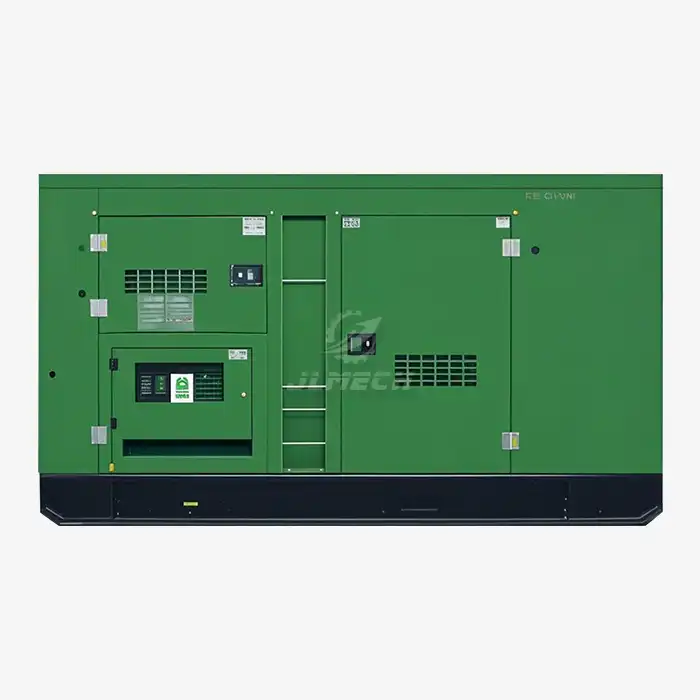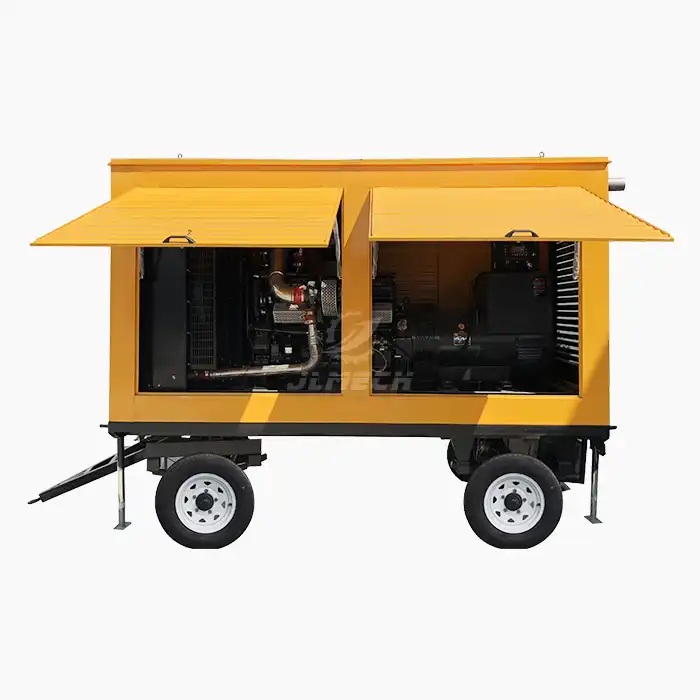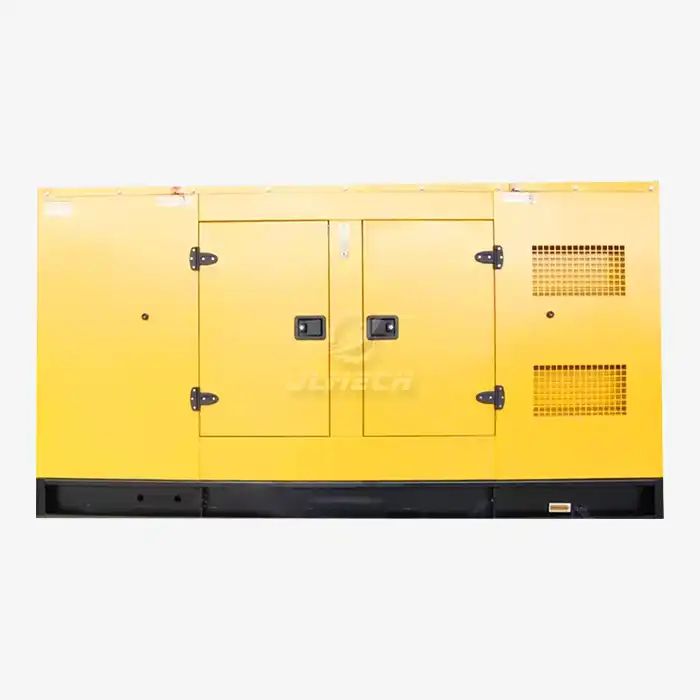Diesel Generator Trends 2025: Powering a Connected World
The global diesel generator market is surging, driven by an insatiable need for reliable power. From AI data centers to remote industrial sites, dependable electricity is non-negotiable.
The global demand for reliable power is stronger than ever. Whether it is a sprawling data center processing AI algorithms, a hospital ensuring life-support systems operate uninterrupted, or a remote mining site powering heavy equipment, the need for a continuous and dependable electricity supply is non-negotiable.
The diesel generator, a long-standing pillar of backup and prime power, is experiencing a significant evolution. The market is not just growing; it is transforming, shaped by technological innovation and shifting global energy demands. Understanding these trends is crucial for businesses worldwide that depend on uninterrupted operations.

A Market on the Rise
The global diesel generator market, valued at approximately $23.49 billion in 2024, is projected to reach $36.85 billion by 2031, growing at a steady compound annual growth rate (CAGR) of 6.7% . This growth is fundamentally driven by the world's increasing reliance on digital infrastructure and the persistent gap between electricity supply and demand in many regions.
Simultaneously, the market for diesel prime power generators is expected to expand from $14.7 billion in 2024 to $30.7 billion by 2034 . This segment's robust growth, at a CAGR of 7.5%, highlights a critical trend: diesel generators are no longer seen merely as backup but are increasingly deployed as a primary source of power in various industrial, commercial, and remote applications.
The AI Revolution: Data Centers Fueling Demand
The most powerful driver in the current market is the explosive growth of Artificial Intelligence (AI). The construction of AI Data Centers (AIDCs) represents a massive new demand segment for high-power diesel generators.
Exploding Compute Power: AI and machine learning workloads require immense computational power. China's smart computing power, for instance, is predicted to double from 725.3 EFLOPS in 2024 to 1,460.3 EFLOPS by 2026 .
Rigorous Power Insurance: To ensure 99.999% uptime, A-grade data centers are mandated by regulations to configure "2N redundant" diesel generator systems . This means having a completely separate backup generator for every primary generator, effectively doubling the required capacity. In this context, diesel generators act as the indispensable "insurance policy for the data center" .
Soaring Demand: It is estimated that China's AIDCs alone will require the configuration of approximately 6,330, 8,912, and 12,327 diesel generator units in 2025, 2026, and 2027 respectively to support their power needs . This concentrated demand is creating a supply bottleneck, offering a window of opportunity for agile manufacturers.
Beyond Backup: Evolving Applications and Technologies
The role of the diesel generator is expanding. While data centers capture headlines, other applications and technological advancements are shaping the industry's future.
Diversified Applications
Telecommunications: The global rollout of 4G and 5G networks, especially in remote and rural areas, relies on generators to ensure 24/7 service. The telecom diesel generator market is valued at over $1 billion and continues to grow .
Oil & Gas and Mining: Operations in remote locations with limited or no grid access depend heavily on robust prime power solutions. This segment is a traditional stronghold for diesel generators and is expected to exceed $2 billion by 2034 .
Commercial and Hospitality: Hotels, data centers, event venues, and hospitals require seamless backup power for safety, security, and business continuity. The hospitality segment, for example, is projected to grow at a CAGR of over 8% .
Product Innovation and Fuel Flexibility
Manufacturers are pushing the boundaries of performance and environmental sustainability.
Multi-Fuel Capabilities: Leading players are developing engines that can run on a variety of fuels. For instance, Weichai has recently showcased a portfolio including natural gas and methanol engines . Their WP13 methanol model claims to reduce pollutants by 80% and lower operating costs by 40% compared to traditional diesel .
Hybrid Solutions: The industry is exploring hybrid generator systems that combine traditional diesel with battery storage to optimize fuel consumption and reduce emissions .
Enhanced Efficiency and Smart Controls: Newer models focus on improved fuel economy, lower emissions, and integrated digital controls for remote monitoring and predictive maintenance, enhancing reliability and ease of use .
Regional Hotspots: Where the Growth Is
Growth is not uniform across the globe. Specific regions present outsized opportunities driven by local factors.
Asia-Pacific: This region dominates, holding over 65% of the global market share . Rapid urbanization, massive infrastructure projects, and often unreliable grid infrastructure in parts of the region are key drivers.
North America: The market is robust, fueled by extreme weather events, an aging power grid, and the massive demand from new data center construction .
Africa: With a market value of over $20 billion, Africa remains a critical market due to widespread lack of grid access and frequent power instability .
Middle East: Major investments in infrastructure, including smart cities and industrial projects, are expected to drive the market to over $15 billion by 2034 .
The Competitive Landscape and the Rise of Chinese Brands
The global diesel generator market is highly competitive. International giants like Caterpillar, Cummins, and MTU (Rolls-Royce Solutions) have long dominated the high-end market, particularly for data center applications .
However, a significant shift is underway. The current supply-demand imbalance, with international leaders facing extended delivery times, has created a prime opportunity for Chinese manufacturers to accelerate their market penetration .
Companies like Weichai Power are making notable strides. Through strategic acquisitions and heavy investment in R&D, they have developed competitive high-horsepower engines and are beginning to secure contracts in demanding sectors like data centers, areas previously dominated by Western brands . This trend towards "localization" and "global capacity layout" is a key strategy for manufacturers aiming to navigate trade policies and better serve regional markets .
The Future is Powered and Prepared
The future of the diesel generator industry is dynamic and promising. The core drivers—digitalization, industrialization, and grid instability—are more relevant than ever. The industry's path forward will be characterized by:
Sustained Growth: Solid, long-term demand across multiple sectors and regions.
Technology-Led Evolution: A strong focus on fuel flexibility, emission reduction, and digital integration.
Strategic Realignment: Increasing competition and the rising share of Chinese manufacturers in the global supply chain.
For businesses and stakeholders worldwide, staying informed on these trends is not just strategic—it is essential for ensuring operational resilience in an increasingly power-dependent world.
Staying ahead of the curve means partnering with a supplier who understands these global trends and is equipped to meet the evolving demands for reliable, efficient, and innovative power generation.











